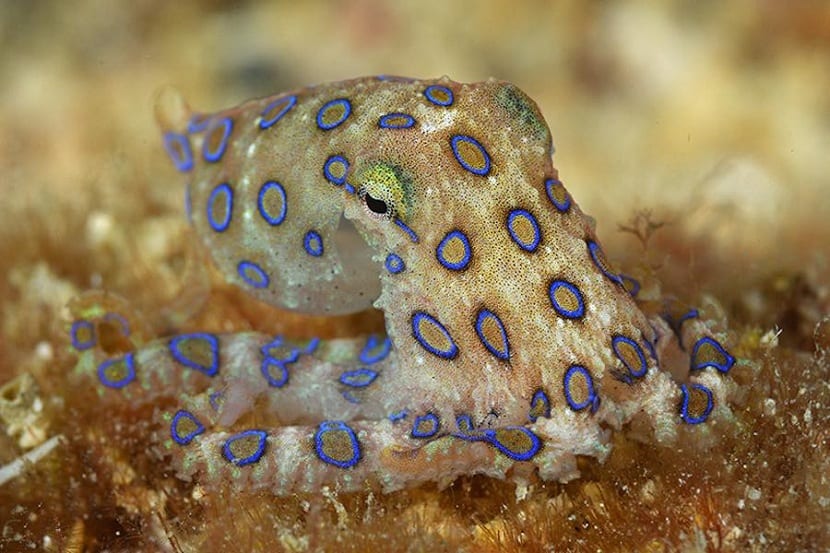
Today we are going to talk about one of the species of fauna that stands out for its peculiar appearance and that lives in the seas and oceans. Its about blue octopus. It is known for being the blue-ringed octopus and has a very peculiar appearance because it is capable of changing colors to blend in with the environment as if it were a chameleon. It is a way to blend in with the environment and ensure survival through this form of camouflage.
In this article we are going to tell you all the secrets of the blue octopus.
Key features
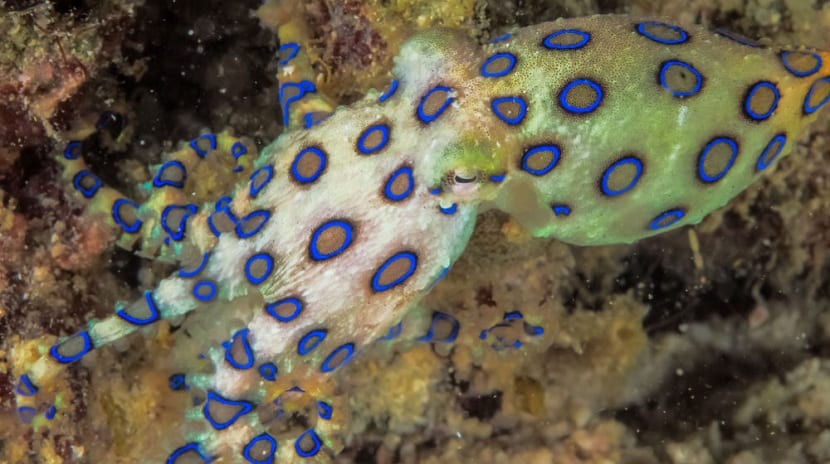
These octopuses inhabit coral barriers where they can be perfectly camouflaged by modifying their color to blend in with the environment. These octopuses have a yellowish color, although in the location in which they live they can be brown or cream in color. It is easy for them to blend in well with the environment, since the bluish coloration allows them to camouflage themselves. It is easy to recognize which is this species of octopus by its characteristic color.
The body of the octopus has blue rings with exceptional detail. It is quite small and has an overall length of 8 inches. Thanks to the anatomy they have, they have a lot of strength and are powerful and even feared. Its body is quite flexible thanks to the fact that it does not have any type of skeleton. Thanks to that, they can move through the water at high speeds and with great agility.
The size should not confuse you because it can extend its arms widely when trying to capture its prey or to defend itself against danger. Instead of crawling like other species of octopus, this species can always be seen swimming. They lie on their side for swimming, making them easier to step on underwater. Although it has a small body, it is capable of storing large amounts of poison inside.
The poison is thought to be the result of its evolution. That before the blue octopus did not have poison inside. Scientists think that the venom has helped turn them into a stronger species over time able to defend themselves and capture their prey more easily. In these types of creatures, evolution can be disconcerting.
Behavior
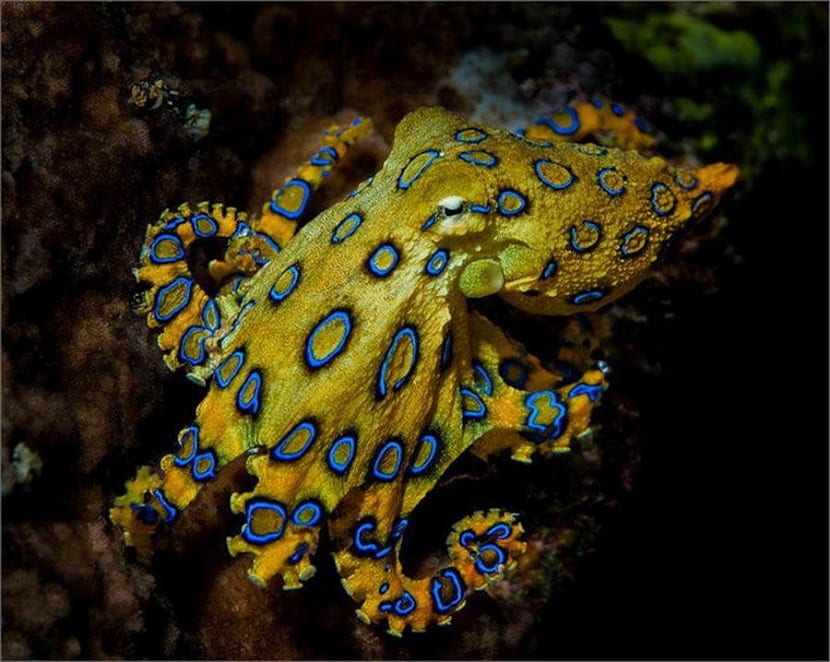
These octopuses have been shown to have a high level of intelligence and can easily adapt to their environment. Thanks to this ability and intelligence, it is able to survive in harsher environments and guarantee its reproductive success. The ink sac that it has inside is also thought to be part of its evolution over the years. The blue octopus may have developed these characteristics to compensate for its small size. The ink helps them create an escape route from predators in order to survive.
Despite its small appearance, it is considered one of the most aggressive species in the world. It is not so common that they can hide like other species of octopus do. If they feel threatened, they are able to attack to defend themselves rather than drop the ink and flee. It should also be noted that they are quite territorial and fight hard to defend their area. When they have food or shelter, they fight hard to preserve it, so it is dangerous to walk around a blue octopus. While other species would not even look at each other, the blue octopus will not last an instant to attack.
When it releases the poison it is very dangerous. For humans, the bite of this octopus is fatal. It is one of the main reasons why humans avoid entering the water where they live. They fear the bite and the injection of the venom.
Habitat and food
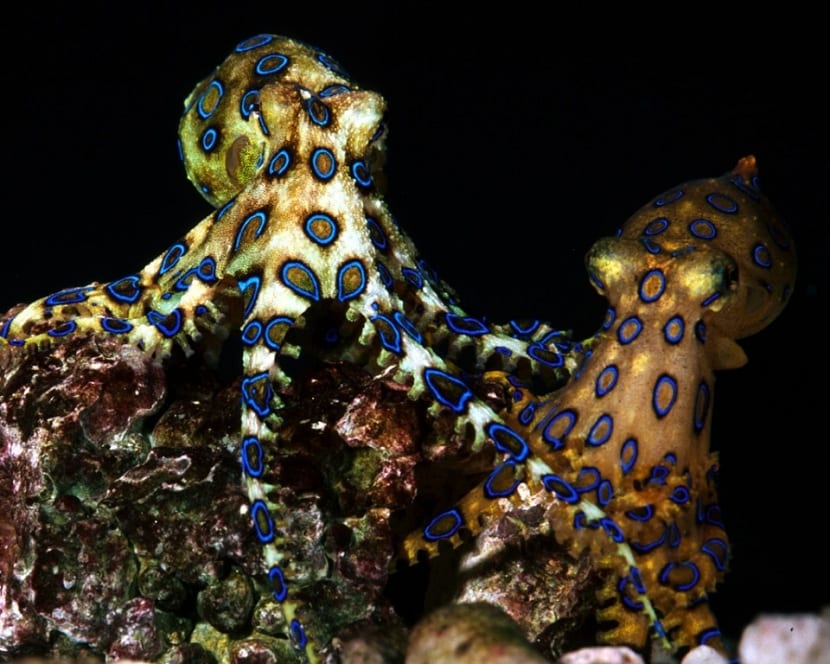
Unlike other octopuses, the blue-ringed octopus is not widely distributed. Some areas are known where they inhabit, for example, more widely in areas of the Pacific and other large groups around Japan and Australia. It is difficult to try to know the exact location of these animals, since they move in search of new homes and for security reasons.
Although we have mentioned that it is a fairly aggressive animal, since it can be involved in dangers that exceed it, they usually avoid fights by migrating from areas on a continuous basis.
With regard to their diet, they have a fairly varied diet. They usually hunt at night and use their excellent vision to find food without problems. They are capable of eating shrimp, fish, and hermit crabs. These animals are quite successful in hunting thanks to the high speed they have in their movement and the poison they use to place in the body of the prey in a short time.
The venom completely paralyzes the prey and gives the octopus the ease of being able to enter the shells using its beak. This is how they consume the food inside the shell. It has also been possible to recognize some cannibalistic behaviors, although it has nothing to do with the lack of food. They eat each other because of territorial disputes.
Reproduction of the blue octopus
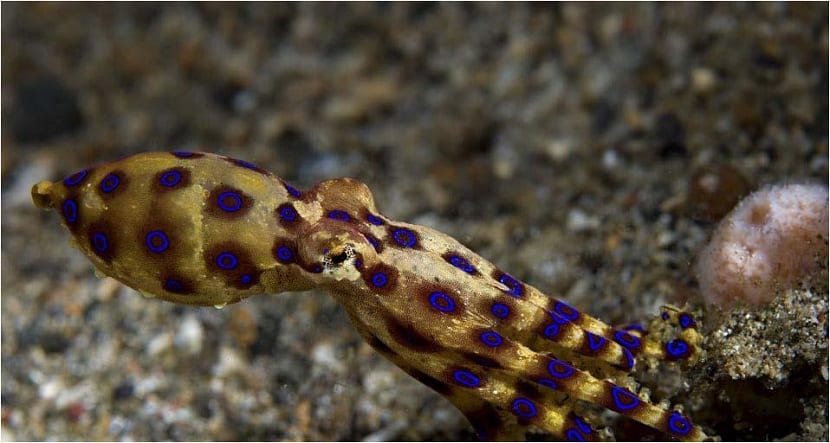
These animals are usually solitary due to the aggressive nature they reflect. They normally change their behavior when they are ready to mate and become less aggressive. Both males and females stay in the same area for a couple of days while mating takes place. Try to make it happen as many times as possible.
Males really enjoy mating, so the females are forced to separate them and move away from them during the following days. The males will try to keep mating and if they don't get what they want, it will surely end in a fight. At each clutch, the female lays about 50 eggs.
Both males and females are fairly short-lived. Males normally die after mating. The females die after the eggs hatch. As usual, the average lifespan of each octopus is between 1 and 1 and a half years.
I hope that with this information you can learn more about the blue octopus.